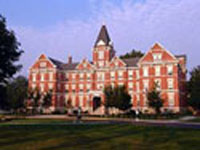
 |
In order to offer [re]fresh[ing] perspectives in multimodal composition at the secondary level, writing instructors at the post-secondary level must take an active part in discussing, modeling, theorizing, and teaching multimodal practices, themselves. As a first step, though, university writing instructors must acknowledge that writing in the 21 st century is dependent upon a rapidly changing concept of what it means to be literate. In her article, "Accumulating Literacy: Writing and Learning to Write in the Twentieth Century," Deborah Brandt (1995, p. 651) traces what she calls the accumulation of literacies in American education and notes "that what is unprecedented about literacy learning (and teaching) in the current climate is . . . [that] the rapid changes are themselves tied up so centrally with literacy and its enterprises." In other words, to at once acquire new literacies as those same literacies rapidly evolve and diversify implies a complexity of learning unique to 21 st century students. Brandt (1995, p. 651) writes: "Contemporary literacy learners--across positions of age, gender, race, class, and language heritage--find themselves having to piece together reading and writing experiences from more and more spheres, creating new and hybrid forms of literacy where once there might have been fewer and more circumscribed forms."
In his work on multimedia, William Costanzo (2008, p. 7) defines media literacy as "the ability to access, understand, analyze, and evaluate messages in a variety of media." Similar to Costanzo, Patricia Dunn (2001, p. 4) argues that those teaching writing "should experiment critically with broader, braver conceptions of 'knowing,' 'text,' 'reading,' and 'writing'", while Lester Faigley et al. (2004, p. 14) argue that "Words, images, and other graphics all function as acts of communication. All are texts . . ." With those thoughts, it is the purview of writing instructors to acknowledge the academy's current bias toward print and require projects and assignments that complicate or question a "print only" mentality. For her part, Dunn (2001, p. 156) lauds the complexity of "projects that demand a one-time mix of oral, social, spatial, written, and or performative work" that she says "would be impossible to download." Furthermore, to borrow from Cindy Selfe (forthcoming, p. 28), "Composition classrooms can provide not only a context for talking about different literacies , but also of practicing different literacies." Viewed from this perspective, multimodal composition pedagogies challenge students and their instructors to grapple with a multitude of literacies--from alphabetic to visual, to aural, to technological and back to alphabetic again.
Unfortunately, as Faigley et al. (2004, p. xvii) note, " . . . most students receive very little formal instruction on how to read, analyze, interpret, and compose texts that go beyond the alphabetic." Ironically, these are the same students who are current consumers of multimodal texts as well as probable future creators of multimodal texts in their adult vocations and community positions. And, as educational psychology attests, these students possess a variety of "intelligences" and learning styles compatible with multimodal instruction. Then why not capitalize on this combination in university writing instruction?
To hear the views of Dr. Cindy Selfe and pre-service teacher Jeremy Brown, please play the videos to the right of your screen.